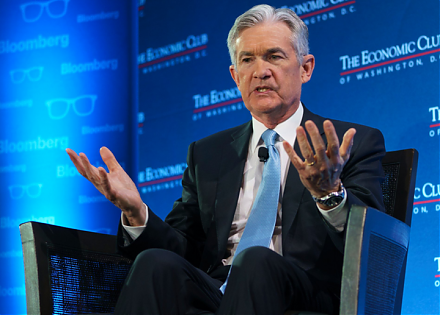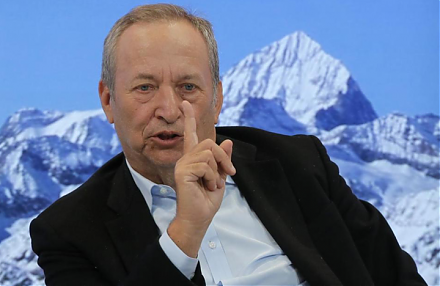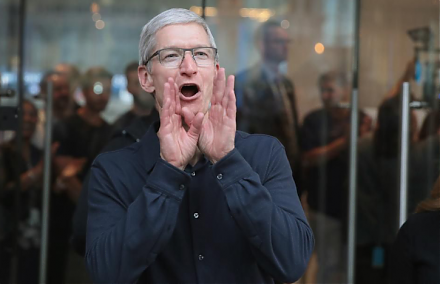

2020-10-13 08:27:00 Tue ET
technology lean startup value creation leadership okr agility growth execution reinvention disruptive innovation megatrends digitization servitization business model dual transformation transactional inclusion feature customization products platforms solutions projects
Agile lean enterprises strive to design radical business models to remain competitive in the face of nimble startups and megatrends.
Carsten Linz, Gunter Muller-Stewens, and Alexander Zimmermann (2017)
Radical business model transformation: the competitive edge in a disruptive world
Agile lean enterprises must attempt to innovate radical business models to remain competitive in the face of nimble startups and new megatrends such as digitization and servitization. Digitization often refers to new structural changes in the technical opportunities for most companies to develop new products, services, and customer interactions. Servitization refers to shifting customer preferences and unique value propositions that emphasize both individual content co-creation and customization. These megatrends now span and balance the joint product and service orientation. In light of these structural changes and megatrends, most business organizations often make important business model decisions across at least 2 core dimensions: transactional inclusion and feature customization. The resultant 4-quadrant matrix builds a useful business model typology with 4 types of business models: products, platforms, solutions, and projects.
It is highly complex for many companies to transform from one business model to another. This radical business model transformation requires team coordination in at least 3 areas. First, the front-end changes pertain to unique value propositions, product feature enhancements, service innovations, customer-centric interactions, and iterative continuous improvements over time. Second, the back-end changes often relate to critical success factors, rare resources, distinctive capabilities, and core competences. Third, the monetization model entails changes in the cost-and-revenue structure. In practice, both agile lean enterprises and nimble startups can no longer afford to think about business models as one-off strategic choices. Over the long run, both business leaders and senior managers must strategically design their business models for better customer engagement and monetization.
Why do business models need to radically change over time?
Several major trends now drive urgency around business model transformation. In a nutshell, digitization refers to structural changes in the technical opportunities for many companies to develop new products, services, and customer interactions etc. Consumers adapt to new digital products and services in the form of both ebooks and online music and video streams. Also, servitization refers to shifting customer preferences and new business value propositions that emphasize both the greater co-creation and customization of customer-centric products and services. A good example can be the gradual introduction of massive open online courses (MOOCs) that represent both middle school and university educational services. The hybrids offer the unique online product and service orientation. At the same time, the main radical business model innovations focus on iterative continuous product feature enhancements, customer-centric services, and customer interactions.
Megatrends force most business organizations to make important business model decisions across at least 2 major dimensions: transactional inclusion and feature customization. Applying these 2 dimensions as axes of a 4-quadrant matrix builds a creative useful business model typology. The resultant matrix describes 4 typical business models: products, platforms, solutions, and projects. The traditional core product model exhibits both low transactional inclusion and feature customization. The main pros include scale economies and less complex key business operations. The main cons include the substantial costs of both traditional and Internet ads for new customer acquisitions as well as few interactions with most customer groups. Good examples of this traditional core product model are retail financial services (e.g. Bank of America and Wells Fargo), hotels (e.g. Marriott and Hilton), consumer software (e.g. Microsoft Office), and so forth.
The platform business model exhibits high transactional inclusion and low feature customization. The main pros include network effects, scale economies, as well as information cascades. Network effects refer to the fact that both the sales and net profits increase exponentially with the number of subscribers (premium members) because the intrinsic network value depends on both the breadth and depth of user interactions. Scale economies often refer to the ideal economic scenario where the average cost decreases as the platform orchestrators scale up the network size of freemium members over time. Information cascades refer to the fact that a few key opinion leaders help spread both informative and newsworthy insights to numerous freemium members in an effective manner. Also, platforms can be quite flexible to continuously adapt to external competitive forces and market requirements. On the other hand, the main cons are the high barriers to market entry. These barriers can often prevent some platforms from becoming the core pervasive industry standard with superior architecture and cost leadership. Good examples of platforms include Airbnb travel accommodation, SAP business software, IEX financial data provision, and many social media network platforms such as Facebook, Twitter, TikTok, and Snapchat.
The solution business model exhibits high transactional inclusion and high feature customization. The primary pros include scale economies of customer integration, better product differentiation, less fierce price competition, and higher bottomline growth with service innovation and content curation. The main cons pertain to the necessary mastery of both many core competences and in-depth customer touch points and experiences. The solution business model further requires coordination with upstream suppliers. Good examples of the solution business model are HSBC Private Wealth Solutions and Mint Personal Finance Tools.
The alternative project business model often shows low transactional inclusion and high feature customization. The primary pros include scope economies, customer-centric institutional knowledge, and user content co-creation through consultancy. The main cons involve core investments in customer-centric distinctive capabilities. Good examples of the alternative project business model include Goldman Sachs IPO and M&A consultancy, iTravel international tourism, and Accenture systemic integration.
The business model is often a strategic choice that can change in accordance with new customer preferences, corporate strengths and weaknesses, external threats and opportunities, and competitive forces. Radical business model transformation sometimes reflects that a substantive portion of the business organization decides to alter its corporate mission and unique value proposition to both current and new customers. For some companies, this strategic choice means undertaking a partial transformation with novelty where a new business model complements the current business model. For instance, Netflix continues to use the platform business model with real-time video streams, but the company now adds a new product business model with the continuous flow of lean production of its own original content. In the future, however, Netflix may need to reconsider the inevitable introduction of online advertisement to boost both sales and profits to better compete with HBO, Disney, Hulu, ESPN, Apple TV, and Amazon Prime Video and Fire TV etc.
It is highly complex for many companies to transform from one business model to another. This radical business model transformation requires team coordination in at least 3 areas. First, the front-end changes pertain to unique value propositions, product feature enhancements, service innovations, customer-centric interactions, and iterative continuous improvements over time. Second, the back-end changes often relate to critical success factors, rare resources, distinctive capabilities, and core competences. Third, the monetization model entails changes in the cost-and-revenue structure. In practice, both agile lean enterprises and nimble startups can no longer afford to think about business models as one-off strategic choices. Many business leaders and strategic managers now need to apply the competitive edge mindset to seek iterative continual improvements, product feature enhancements, and service innovations over time. In time, these product and service innovations refine and renew the current business model with some complementary inventive elements.
How can business leaders steer their radical business model transformation?
The radical business model transformation board is a continuous adaptation of the business typology matrix. This business model transformation board can help both business leaders and senior managers consider if it is worth both the exit and entry barriers crossing from one business model to a new one. In practice, the business model meridian divides the 2 left-hand business models (cf. platforms and products) from the 2 right-hand business models (solutions and projects). Also, the business model equator divides the 2 upper business models (platforms and solutions) from the 2 lower business models (products and projects). When agile lean enterprises choose to cross from one quadrant to another, these enterprises make a strategic move between North, South, East, and West. There are pervasive changes to the front end, back end, and monetization for each business model transformation.
South-to-North changes entail a sharp increase in transactional inclusion. The front end improves the overall customer experience, boosts customer engagement and retention, and provides a holistic solution to core business process enhancements over time. The back end takes control over the architectural industry standard and social media network platform. From a fundamental viewpoint, the monetarization mechanism creates fresh opportunities for continuous consumption and lean user content production via ad revenue streams, subscriptions, or freemium fees.
North-to-South changes require a substantive decrease in transactional inclusion. The front end emphasizes new unique value propositions for standalone products, services, and solutions. Also, the front end focuses on customer acquisitions and new business opportunities for product feature enhancements. The back end helps establish close relations with upstream suppliers. The backend core competences often make each individual product, service, or solution highly competitive. In brief, the monetization mechanism sets simple and transparent prices (instead of having to bundle products, services, and solutions).
West-to-East changes require a substantial increase in feature customization. The front end often introduces flexible and integrative service innovations, uses hybrid offers to meet customer needs, and then increases dialogues with new customers. The back end makes lean production more flexible to process customer demands and requirements. As a consequence, the monetization mechanism applies a new pricing model that reflects the pervasive inclination for customers to pay a premium for greater feature customization. This monetization mechanism further focuses on variable costs for different degrees of customer engagement over time.
East-to-West changes entail a substantive decrease in feature customization. The front end develops a new industry standard, applies a scalable revenue approach, and standardizes both online and offline sales channels. The back end uses both autonomous and even artificially intelligent machines to transform human services into reusable elements for better institutional knowledge management. As a result, the monetization mechanism helps identify a plausible range of competitive prices for better time-invariant cost management.
Agile lean enterprises sometimes cross both the business meridian and equator by making either a diagonal move or a stepwise one clockwise or counterclockwise. It is often far more difficult for most agile lean enterprises to navigate this new type of radical business model transformation. However, this unconventional business model transformation can be advantageous. Both business leaders and managers must be up-front about the ultimate goals and visions with one coherent business model transformation. This focus can help most agile lean enterprises circumvent change fatigue and resistance from time to time.
Agile lean enterprises must attempt to innovate radical business models to remain competitive in the face of nimble startups and new megatrends such as digitization and servitization. Digitization often refers to new structural changes in the technical opportunities for most companies to develop new products, services, and customer interactions. Servitization refers to shifting customer preferences and unique value propositions that emphasize both individual content co-creation and customization. These megatrends now span and balance the joint product and service orientation. In light of these structural changes and megatrends, most business organizations often make important business model decisions across at least 2 core dimensions: transactional inclusion and feature customization. The resultant 4-quadrant matrix builds a useful business model typology with 4 types of business models: products, platforms, solutions, and projects.
It is highly complex for many companies to transform from one business model to another. This radical business model transformation requires team coordination in at least 3 areas. First, the front-end changes pertain to unique value propositions, product feature enhancements, service innovations, customer-centric interactions, and iterative continuous improvements over time. Second, the back-end changes often relate to critical success factors, rare resources, distinctive capabilities, and core competences. Third, the monetization model entails changes in the cost-and-revenue structure. In practice, both agile lean enterprises and nimble startups can no longer afford to think about business models as one-off strategic choices. Over the long run, both business leaders and senior managers must strategically design their business models for better customer engagement and monetization.
This analytic essay cannot constitute any form of financial advice, analyst opinion, recommendation, or endorsement. We refrain from engaging in financial advisory services, and we seek to offer our analytic insights into the latest economic trends, stock market topics, investment memes, personal finance tools, and other self-help inspirations. Our proprietary alpha investment algorithmic system helps enrich our AYA fintech network platform as a new social community for stock market investors: https://ayafintech.network.
We share and circulate these informative posts and essays with hyperlinks through our blogs, podcasts, emails, social media channels, and patent specifications. Our goal is to help promote better financial literacy, inclusion, and freedom of the global general public. While we make a conscious effort to optimize our global reach, this optimization retains our current focus on the American stock market.
This free ebook, AYA Analytica, shares new economic insights, investment memes, and stock portfolio strategies through both blog posts and patent specifications on our AYA fintech network platform. AYA fintech network platform is every investor's social toolkit for profitable investment management. We can help empower stock market investors through technology, education, and social integration.
We hope you enjoy the substantive content of this essay! AYA!
Andy Yeh
Chief Financial Architect (CFA) and Financial Risk Manager (FRM)
Brass Ring International Density Enterprise (BRIDE) ©
Do you find it difficult to beat the long-term average 11% stock market return?
It took us 20+ years to design a new profitable algorithmic asset investment model and its attendant proprietary software technology with fintech patent protection in 2+ years. AYA fintech network platform serves as everyone's first aid for his or her personal stock investment portfolio. Our proprietary software technology allows each investor to leverage fintech intelligence and information without exorbitant time commitment. Our dynamic conditional alpha analysis boosts the typical win rate from 70% to 90%+.
Our new alpha model empowers members to be a wiser stock market investor with profitable alpha signals! The proprietary quantitative analysis applies the collective wisdom of Warren Buffett, George Soros, Carl Icahn, Mark Cuban, Tony Robbins, and Nobel Laureates in finance such as Robert Engle, Eugene Fama, Lars Hansen, Robert Lucas, Robert Merton, Edward Prescott, Thomas Sargent, William Sharpe, Robert Shiller, and Christopher Sims.
Follow AYA Analytica financial health memo (FHM) podcast channel on YouTube: https://www.youtube.com/channel/UCvntmnacYyCmVyQ-c_qjyyQ
Follow our Brass Ring Facebook to learn more about the latest financial news and fantastic stock investment ideas: http://www.facebook.com/brassring2013.
Free signup for stock signals: https://ayafintech.network
Mission on profitable signals: https://ayafintech.network/mission.php
Model technical descriptions: https://ayafintech.network/model.php
Blog on stock alpha signals: https://ayafintech.network/blog.php
Freemium base pricing plans: https://ayafintech.network/freemium.php
Signup for periodic updates: https://ayafintech.network/signup.php
Login for freemium benefits: https://ayafintech.network/login.php
If any of our AYA Analytica financial health memos (FHM), blog posts, ebooks, newsletters, and notifications etc, or any other form of online content curation, involves potential copyright concerns, please feel free to contact us at service@ayafintech.network so that we can remove relevant content in response to any such request within a reasonable time frame.
2018-02-27 09:35:00 Tuesday ET

Fed's new chairman Jerome Powell testifies before Congress for the first time. He vows to prevent price instability for U.S. consumers, firms, and finan
2019-02-04 07:42:00 Monday ET

Federal Reserve remains patient on future interest rate adjustments due to global headwinds and impasses over American trade and fiscal budget negotiations.
2020-07-19 09:25:00 Sunday ET

Senior business leaders can learn much from the lean production system with iterative continuous improvements at Toyota. Takehiko Harada (2015)
2018-09-07 07:33:00 Friday ET

The Economist re-evaluates the realistic scenario that the world has learned few lessons of the global financial crisis from 2008 to 2009 over the past deca
2021-07-07 05:22:00 Wednesday ET

What are the best online stock market investment tools? Stock trading has seen an explosion since the start of the pandemic. As people lost their jobs an
2018-01-25 08:32:00 Thursday ET

After its flagship iPhone X launch, Apple reports its highest quarterly sales revenue over $80 billion in the tech titan's 41-year history. Apple expect